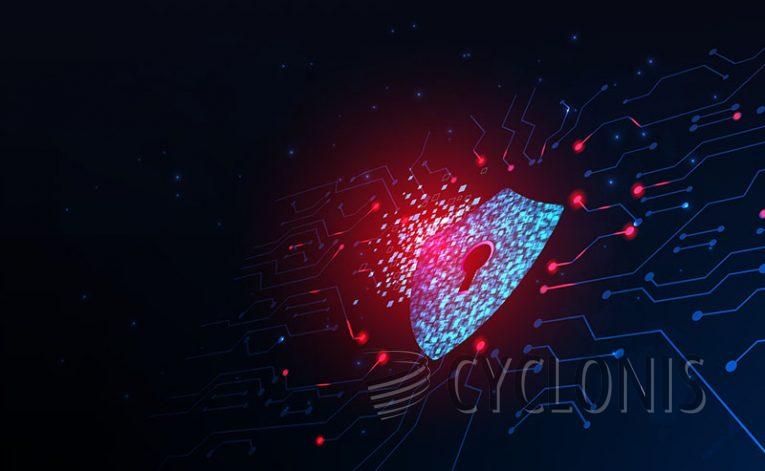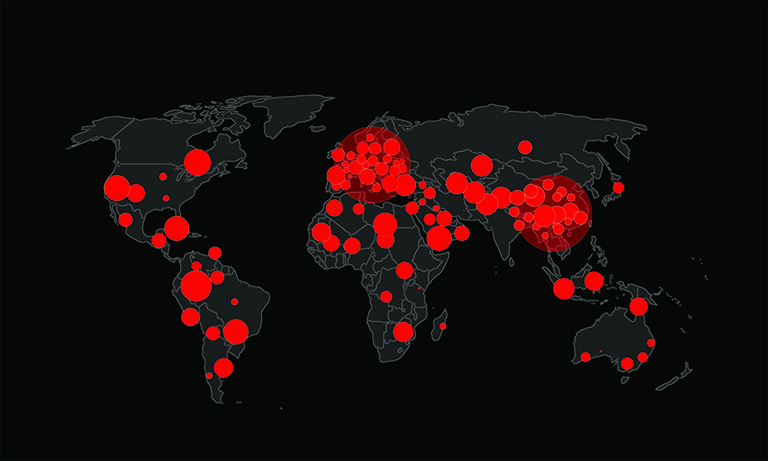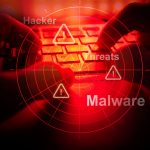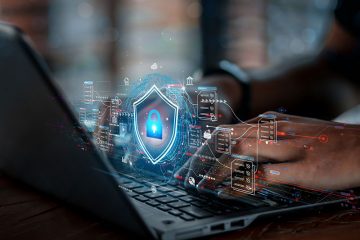DarkMystic Ransomware: A Silent Lockdown with a Ticking Clock

Table of Contents
A New Name in the BlackBit Family
A fresh ransomware strain known as DarkMystic has entered the scene, carrying the digital fingerprints of the infamous BlackBit ransomware family. DarkMystic, like its predecessors, is built to encrypt data and extort victims for financial gain. On infected machines, it renames files by embedding the attacker's email address and a victim-specific ID and adding the extension ".darkmystic" to every locked file. For example, a typical image file named "document.pdf" becomes "[darkmystic@onionmail.com][UniqueID]document.pdf.darkmystic."
The Ransom Demands and Hostile Warnings
Once the encryption is complete, DarkMystic delivers its message loud and clear. It modifies the victim's desktop wallpaper and drops two distinct ransom notes: a text file titled "Restore-My-Files.txt " and a pop-up window named "info.hta." Both messages urge victims to contact the attackers to begin the recovery process.
The pop-up contains additional details, outlining that a Bitcoin payment is required to decrypt the files. Victims are told that failure to pay within 48 hours will end in a doubling of the ransom. Beyond that, the attackers threaten to delete files and damage the hard drive, further pressuring users to comply. A limited "test decryption" offer is included, allowing the victim to recover up to three non-critical files before payment as proof of capability.
Here's what the ransom note actually says:
All your files have been encrypted by BLACKBIT!
29d,23:55:54 LEFT TO LOSE ALL OF YOUR FILES
All your files have been encrypted due to a security problem with your PC.
If you want to restore them, please send an email darkmystic@onionmail.comYou have to pay for decryption in Bitcoin. The price depends on how fast you contact us.
After payment we will send you the decryption tool.
You have to 48 hours(2 Days) To contact or paying us After that, you have to Pay Double.
In case of no answer in 24 hours (1 Day) write to this email darkmystic@tutamail.com
Your unique ID is : -You only have LIMITED time to get back your files!
•If timer runs out and you dont pay us , all of files will be DELETED and you hard disk will be seriously DAMAGED.
•You will lose some of your data on day 2 in the timer.
•You can buy more time for pay. Just email us.
•THIS IS NOT A JOKE! you can wait for the timer to run out ,and watch deletion of your files 🙂What is our decryption guarantee?
•Before paying you can send us up to 3 test files for free decryption. The total size of files must be less than 2Mb (non archived), and files should not contain valuable information. (databases,backups, large excel sheets, etc.)Attention!
•DO NOT pay any money before decrypting the test files.
•DO NOT trust any intermediary. they wont help you and you may be victim of scam. just email us , we help you in any steps.
•DO NOT reply to other emails. ONLY this two emails can help you.
•Do not rename encrypted files.
•Do not try to decrypt your data using third party software, it may cause permanent data loss.
•Decryption of your files with the help of third parties may cause increased price (they add their fee to our) or you can become a victim of a scam.
What Ransomware Like DarkMystic Actually Does
At its core, ransomware is a type of malicious software that prevents data access by encrypting it with complex algorithms. Decryption requires a unique key that only the attacker possesses. Without that key, recovery is practically impossible unless a clean backup exists or the ransomware itself is flawed—a rare scenario in more advanced strains like DarkMystic.
DarkMystic reportedly uses strong encryption methods, and researchers caution that recovery without the decryption key is unrealistic. While the attackers offer a way to regain access, paying the ransom is highly discouraged. There are no guarantees the key will be delivered, and many victims have been left empty-handed even after making payments.
The High Cost of Compliance
Sending money to the operators behind DarkMystic not only funds criminal enterprises but also supports the ongoing development of even more potent malware. Compliance encourages these groups to continue targeting individuals, businesses, and institutions with increasingly sophisticated tools.
Removing the ransomware from a system is essential to halt further encryption, but doing so won't restore already locked files. The only reliable method of recovering data is through backups—ideally stored across multiple secure locations, such as offline drives and remote servers. If such backups don't exist, the data may be lost permanently.
Distribution Tactics: How DarkMystic Spreads
Ransomware like DarkMystic often spreads through phishing emails, deceptive downloads, and software bundling. A seemingly harmless attachment or link could carry the malware payload. These files come in various disguises—compressed archives, executable programs, Office documents, PDFs, or even JavaScript files. Just opening a malicious file can trigger infection.
More advanced distribution methods include drive-by downloads, where malware installs silently via compromised websites, and malvertising, where malicious ads redirect users to harmful content. Additionally, trojans and backdoors are frequently used to install ransomware behind the scenes. Some ransomware even spreads laterally through local networks and USB drives, targeting connected systems automatically.
Best Practices for Avoiding Ransomware
Avoiding ransomware starts with caution and vigilance. Suspicious emails, particularly those with attachments or urgent language, should be approached carefully. Links and files from unknown or unverified sources should never be opened.
Safe downloading habits also go a long way. Stick to official websites and trusted sources for all software installations. Avoid "cracked" software, third-party updaters, or activation tools, which are notorious for carrying embedded malware. Keep your operating system and antivirus software updated to close off common security holes.
Final Words
DarkMystic ransomware represents a troubling evolution in the BlackBit family, combining aggressive encryption, financial extortion, and psychological pressure to coerce victims into action. While the threat is real, panic is not the answer. Staying informed, maintaining secure backups, and practicing smart digital hygiene are the best defenses against this and other ransomware variants.
With a measured response and a proactive security strategy, individuals and organizations can better protect themselves from cyber extortionists' dark tactics.






